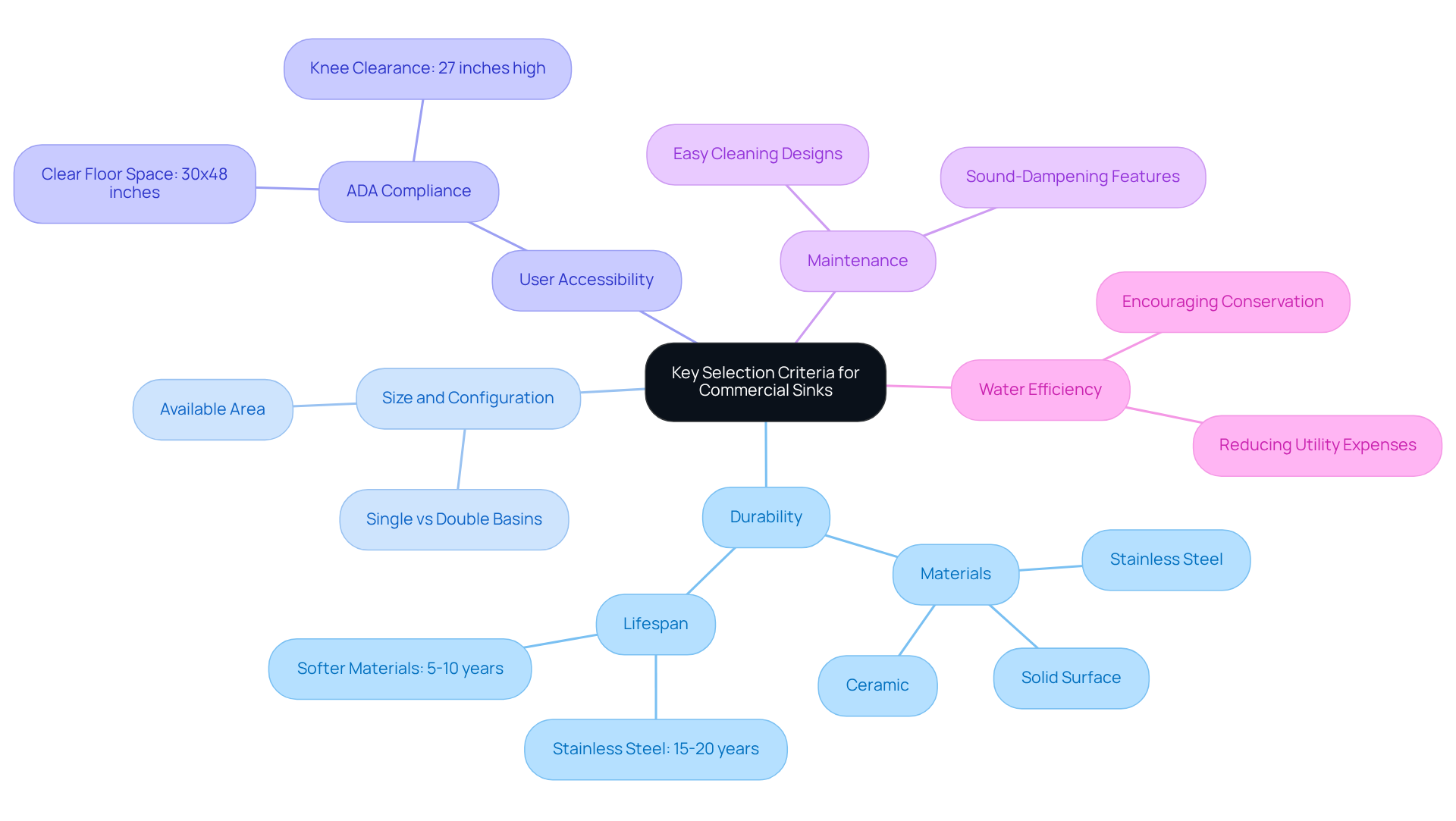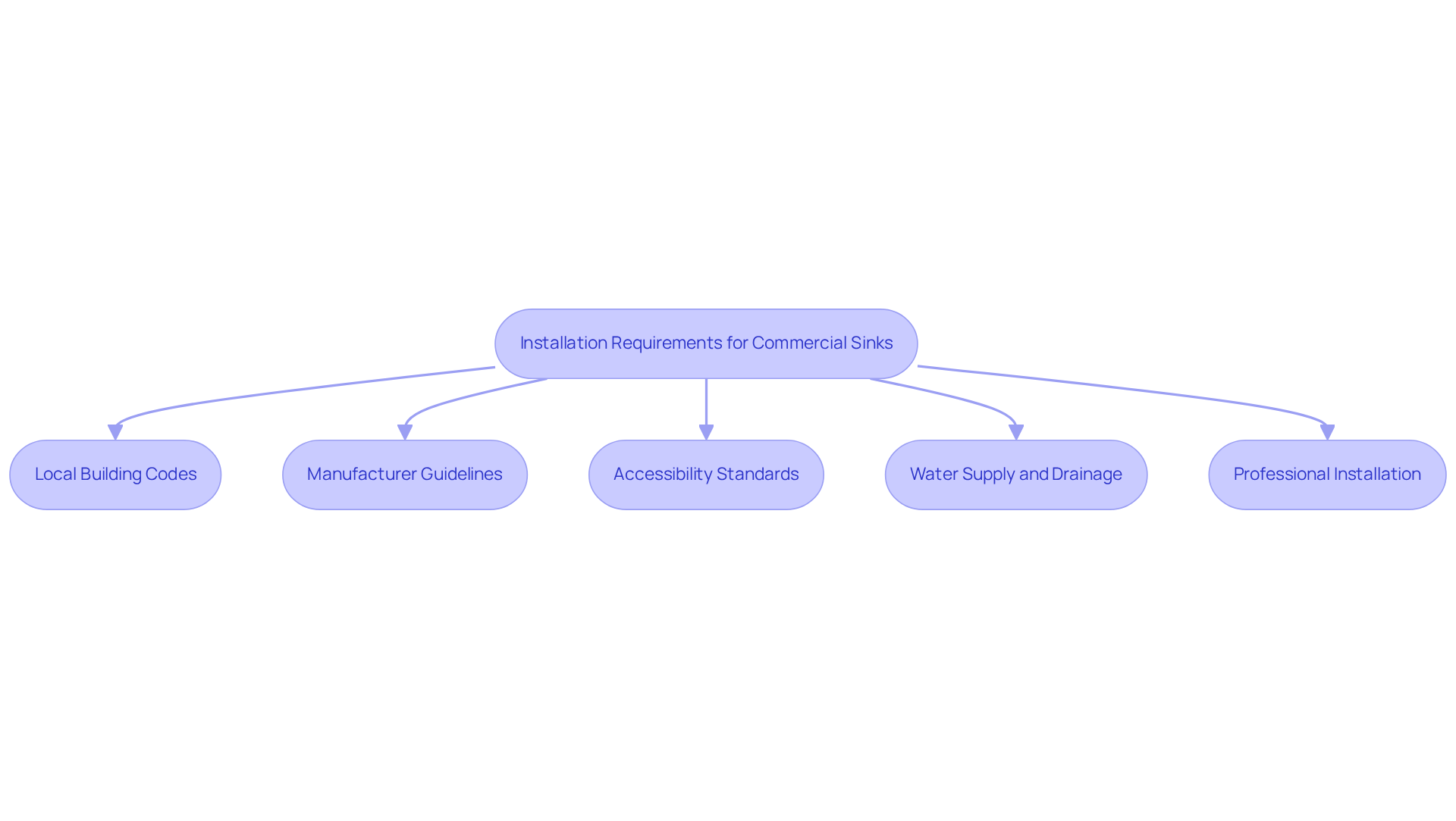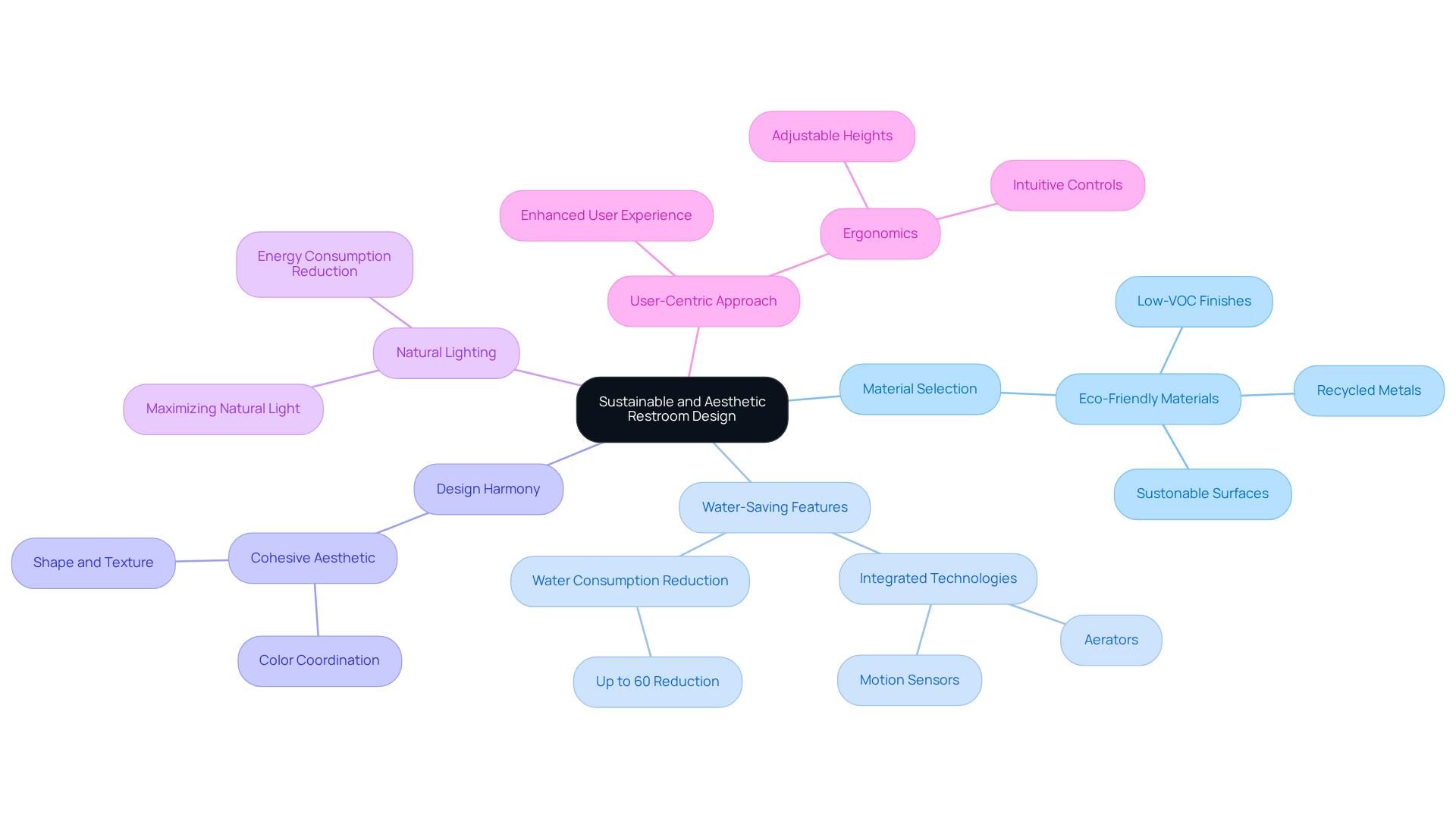Overview
This article examines three fundamental practices for selecting commercial sinks, focusing on durability, user accessibility, and maintenance. It articulates essential criteria, including:
- Material selection for longevity
- Adherence to ADA standards for inclusivity
- The significance of easy-to-clean designs
These factors ensure that sinks operate effectively in high-traffic environments, providing a seamless experience for users and maintaining operational efficiency.
Introduction
Selecting the right commercial sink transcends mere aesthetics; it demands a meticulous consideration of functionality, durability, and regulatory compliance. Designers and facility managers are tasked with the intricate challenge of balancing these critical factors, all while ensuring that the selected sinks not only enhance user experience but also align with sustainability goals.
What essential practices can guide this selection process? How can they contribute to the creation of a restroom environment that is both efficient and visually appealing? These questions set the foundation for a deeper exploration into the practices that can lead to optimal choices in commercial sink selection.
Identify Key Selection Criteria for Commercial Sinks
When selecting commercial sinks, it is crucial to consider several key criteria.
-
Durability: Commercial basins must endure heavy usage. Look for materials like stainless steel or solid surface that resist scratches and stains. Stainless steel basins can endure 15-20 years with appropriate maintenance, whereas softer substances might require replacement every 5-10 years.
-
Size and Configuration: Evaluate the available area and select basins that accommodate without sacrificing functionality. Consider single versus double basins based on the number of individuals.
-
User Accessibility: Ensure that sinks are accessible to all users, including those with disabilities. Compliance with ADA standards is essential, which includes specific requirements for clear floor space of at least 30 inches by 48 inches and knee clearance of 27 inches high, 30 inches wide, and 11 inches deep.
-
Maintenance: Opt for designs that facilitate easy cleaning and maintenance, reducing downtime and operational costs. Consider sound-dampening features for stainless steel basins to mitigate noise, which can be a drawback of this material.
-
Water Efficiency: Choose basins that encourage water conservation, aligning with sustainability objectives and decreasing utility expenses.
By concentrating on these criteria, designers can ensure that the chosen sinks commercial not only meet aesthetic standards but also function effectively in high-traffic environments. Incorporating insights from architects on the importance of durability and material selection can further enhance the decision-making process.

Understand Installation Requirements and Compliance Standards
Proper installation of sinks commercial necessitates a comprehensive understanding of various essential requirements.
-
Local Building Codes: Familiarizing oneself with local plumbing regulations governing fixture installation is crucial. This includes specific drainage and water supply requirements. For instance, in Phoenix, Arizona, a plumbing permit is required, and the standard for most residential basin drains is a 1.5-inch diameter pipe.
-
Manufacturer Guidelines: Always consult the manufacturer's installation instructions, which detail critical aspects such as mounting techniques, plumbing connections, and maintenance protocols. Adhering to these guidelines ensures optimal performance and longevity of the sink.
-
Accessibility Standards: Adherence to ADA guidelines is essential, particularly concerning height and reach criteria for individuals with disabilities. This consideration not only enhances usability but also ensures that the installation is inclusive. Specific regulations may dictate the height for user accessibility and comfort, which are critical for compliance.
-
Water Supply and Drainage: Adequate planning for water supply lines and drainage systems is vital to prevent leaks and ensure efficient operation. The correct slope on horizontal drain lines, typically a minimum of 1/4 inch per foot, is necessary for effective wastewater removal.
-
Professional Installation: Engaging licensed professionals for installation is advisable to guarantee compliance with all relevant regulations and standards. Their expertise can help navigate local codes and ensure that all plumbing connections are watertight and secure. Consulting local building authorities or licensed plumbers can provide clarity on acceptable installation practices.
By adhering to these guidelines, designers can ensure that washbasins are installed properly, greatly improving both functionality and safety in sinks commercial restroom settings.

Incorporate Sustainability and Aesthetic Considerations in Design
To create a restroom environment that is both sustainable and aesthetically pleasing, it is essential to consider several key factors:
- Material Selection: Opt for eco-friendly materials, such as recycled metals or low-VOC finishes, which significantly reduce environmental impact.
- Water-Saving Features: Incorporate basins equipped with integrated water-saving technologies, including aerators or motion sensors, capable of reducing water consumption by up to 60%. This aligns seamlessly with current sustainability objectives.
- Design Harmony: Ensure that the sinks commercial style complements the overall restroom aesthetic. Attention to color, shape, and texture will create a cohesive look that enhances the space.
- Natural Lighting: Whenever possible, configure the restroom to maximize natural light. This not only enhances the user experience but also reduces energy consumption, reflecting biophilic concepts that emphasize the connection between indoor environments and nature.
- User-Centric Approach: Prioritize a user-friendly experience by considering ergonomics and ease of use in the sink layout. Features such as adjustable heights and intuitive controls in sinks commercial can significantly enhance functionality. As bathroom creator Jeff Boico points out, incorporating thoughtful aesthetic elements can transform the user experience.
By prioritizing sustainability and aesthetics, designers can create restroom environments that are not only functional but also reflect contemporary design trends and values.

Conclusion
Selecting the right commercial sinks is essential for creating restroom environments that are both functional and aesthetically pleasing. By emphasizing durability, accessibility, and sustainability, designers can ensure their choices not only meet practical needs but also align with modern values and regulations.
This article underscores three pivotal practices:
- Identifying essential selection criteria
- Understanding installation requirements
- Incorporating sustainability alongside aesthetic considerations
Durability and user accessibility take precedence, while adherence to local building codes and ADA standards guarantees safety and usability. Furthermore, prioritizing eco-friendly materials and water-saving features not only enhances the environmental impact but also contributes to the overall design harmony of the space.
Ultimately, the selection and installation of commercial sinks should embody a commitment to functionality, safety, and sustainability. By embracing these best practices, designers can craft restroom environments that are not only efficient and compliant but also resonate with contemporary design trends, fostering a positive experience for all users.
Frequently Asked Questions
What are the key criteria to consider when selecting commercial sinks?
The key criteria include durability, size and configuration, user accessibility, maintenance, and water efficiency.
Why is durability important for commercial sinks?
Durability is crucial because commercial sinks endure heavy usage. Materials like stainless steel or solid surface are recommended as they resist scratches and stains, with stainless steel lasting 15-20 years with proper maintenance.
How should the size and configuration of commercial sinks be determined?
The size and configuration should be evaluated based on the available area to ensure functionality is not sacrificed. Consider whether a single or double basin is needed based on the number of users.
What considerations should be made for user accessibility in commercial sinks?
Sinks must be accessible to all users, including those with disabilities, complying with ADA standards. This includes having clear floor space of at least 30 inches by 48 inches and knee clearance of 27 inches high, 30 inches wide, and 11 inches deep.
What maintenance features should be looked for in commercial sinks?
Opt for designs that facilitate easy cleaning and maintenance to reduce downtime and operational costs. Features like sound-dampening for stainless steel basins can also help mitigate noise.
How can water efficiency be a factor in selecting commercial sinks?
Choosing sinks that promote water conservation is important for aligning with sustainability goals and reducing utility expenses.




